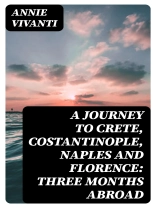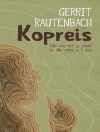Annie Vivanti’s ‘A Journey to Crete, Costantinople, Naples and Florence: Three Months Abroad’ is a captivating travel diary that combines vivid descriptions of the exotic locations visited with insightful reflections on culture and history. Written in a lyrical and engaging style, Vivanti’s work provides a unique perspective on the Mediterranean world in the late 19th century, showcasing her keen eye for detail and poetic sensibility. The book not only serves as a valuable historical document but also as a literary gem that captures the essence of each destination with lyrical prose and a deep understanding of the interconnectedness of cultures. Vivanti’s ability to weave personal experiences with broader themes of travel and discovery makes this book a delightful read for both travel enthusiasts and literary scholars alike. Annie Vivanti, a well-traveled and sophisticated writer, draws on her own experiences and observations to offer readers a glimpse into the beauty and complexity of the Mediterranean world, making ‘A Journey to Crete, Costantinople, Naples and Florence: Three Months Abroad’ a must-read for anyone interested in the intersection of travel, literature, and cultural exploration.
Circa l’autore
Annie Vivanti (1866-1942) was a prolific writer, poet, and translator of immense talent and cosmopolitan heritage. Born in London to an Italian father, Anselmo Vivanti, and a German mother, Anna Lindau, she grew up in a multilingual environment that richly informed her literary output. Vivanti’s oeuvre is marked by its emotional intensity and vivid characterizations, often exploring themes of identity, belonging, and the experiences of women. Her writing style is characterized by its lyrical quality and poignant storytelling, and she has been celebrated for her contributions to both English and Italian literature.
Among Vivanti’s notable works, ‘A Journey to Crete, Costantinople, Naples and Florence: Three Months Abroad’ stands out as an engaging travelogue that reflects her insightful observations and personal experiences. This book, like much of her writing, showcases her ability to weave together narrative and descriptive prowess, capturing the essence of the places she visited. Vivanti’s works resonate with the introspective journeys of her characters and her own life, bridging cultures and languages with remarkable fluidity. Her legacy as an author continues to inspire readers and scholars interested in early 20th century literature and the contributions of women writers to the cultural tapestry of that era.












